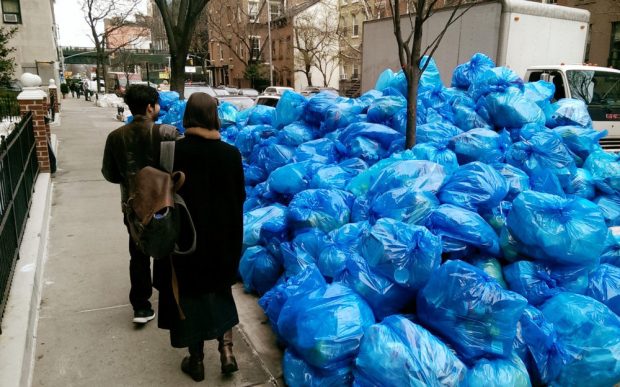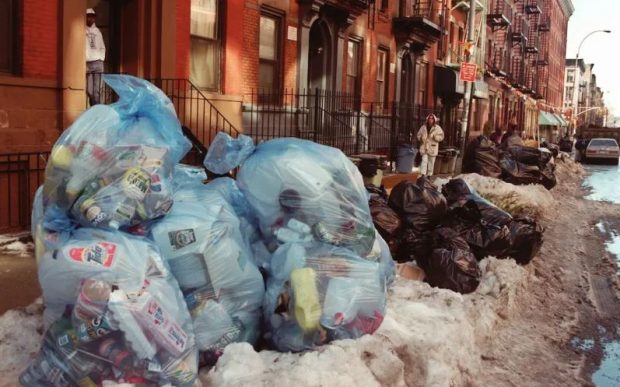
According to a study by the American Academy of Science, no city in the world produces more garbage than New York – over 30 million tons per year!
There are no incinerators or landfills within the city limits. (The last landfill, Fresh Kills on Staten Island, was closed in 2001. It had to be reopened a few months later to pick up the debris created after the 9/11 attacks. It is now closed for good.) It will Waste separation is also practiced, and around 20 percent of private waste – metal, glass, plastic, paper – is transported to recycling plants.
The 10,000-strong municipal Department of Sanitation (DOS) takes care of the private waste, including the rubbish in the 23,000 rubbish baskets on the streets – around 10 million kilos per day.
The DOS also has other duties, such as street cleaning, but most of the workers are busy cleaning up the garbage. A few figures show how immense the city’s garbage collection is. The fleet comprises 6,000 vehicles, including over 2,000 garbage trucks. Depending on the year, 100 to 200 million dollars are spent on new purchases. The facility in Queens, where the fleet is maintained, is – except for military facilities – the largest of its kind in the entire United States, replacing 100,000 tires a year alone.
READ: New York City: Culinary Classics in Manhattan and Brooklyn
The private waste then goes to one of 66 transfer facilities at various points in the city, where it is transported out of New York by 18-axle vehicles and freight trains with up to 35 wagons. The waste is then transported out of the city.
A lot comes to neighboring states like New Jersey or Pennsylvania, but Ohio and South Carolina also accept New York rubbish. These states get hundreds of millions of dollars annually for this. (The people in the receiving regions are understandably not always enthusiastic about the loads from New York. Michael Stammel won the mayoral election in November in the city of Rensselaer, in New York State, 250 km from New York City, because he promised that the first Closing 5-year-old Dunn Landfill Landfill. The landfill is near a school and annually receives most of the trash that comes from New York City.)

Where the garbage goes – New York Department of Environmental Protection.
The amount of commercial waste, as well as office, restaurant, and shop waste, is rough twice as much as private waste. Since 1957, private companies have not been entrusted with their disposal by the municipal utilities anymore. This business has been massively controlled by organized crime, especially the mafia. There were illegal agreements with the result that different companies did not compete in “their” areas. So there was one provider per area, with the inflated prices that such a structure entails. In the 1990s, the authorities largely smashed the garbage cartel and some of the “garbage kings” ended up behind bars. Now there is a new system with maximum limits for the various disposal services.

Photo Uma Wilkinson
Because commercial waste is generally more homogeneous than private waste – for example, a large part of office waste consists of paper – it is more suitable for reuse and has a significantly higher recycling rate. Otherwise, its disposal is practically the same as with private waste: It comes to transfer stations and is taken from there to the city. (Incidentally, most of the garbage in the city is collected at night, as there is less traffic.)
The largest item is the waste products from construction projects, an average of more than 17,000 tons per day. Composites and plastics such as plasterboard, insulation materials, floor coverings, etc. are sent to a landfill. Natural materials such as gravel, crushed stone, and stones, which are produced in huge quantities when excavating for foundations, as well as concrete, are ground up and reused for various purposes.
READ: Wonderful Places: Discover the Beaches of the American Northeast Coast
Although the US is becoming more environmentally conscious and the city of New York is doing some work to reduce the amount of garbage, it is expected that the volume will continue to increase. The reasons for this are the economic and population growth and the fact that a large part of the people still shows no interest in waste reduction. Many therefore consider it only a matter of time before the major garbage crisis occurs.
Like us on Facebook for more stories like this: